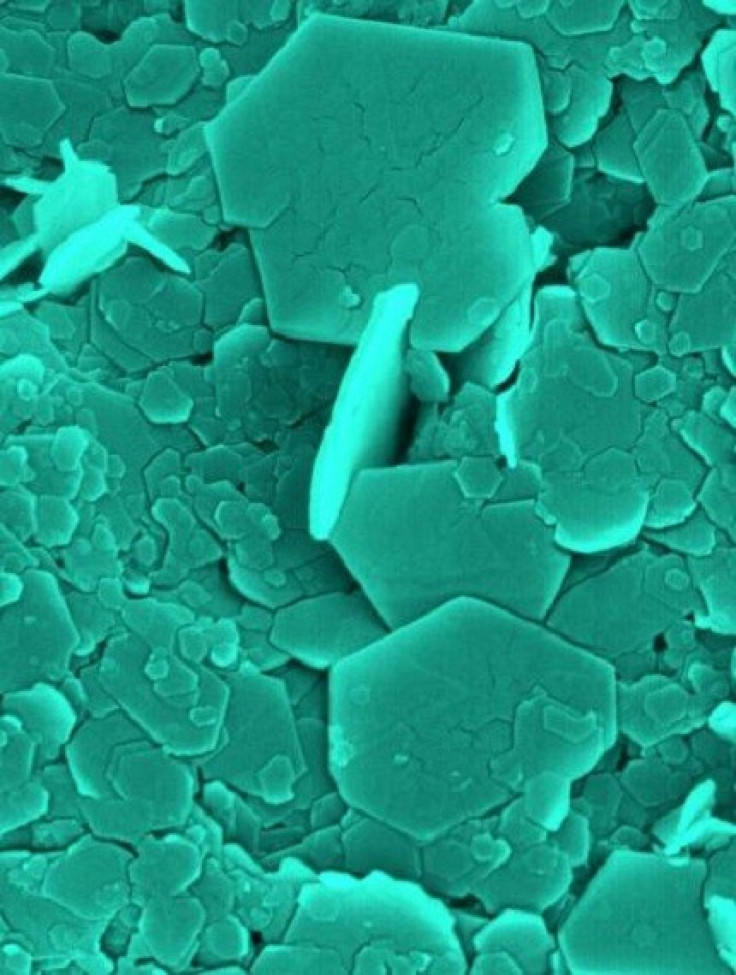Green Rust Could Help Clean Nuclear Waste

The nuclear disaster in Japan could leave many areas contaminated with radioactive heavy metals, and even after cleanup the contaminated material will have to be put somewhere. Wherever that is, there is the risk of groundwater contamination.
A Danish researcher says he may have found a way to solve that problem, using a form of rust to clean out groundwater. Bo C. Christiansen, a geochemist at the University of Copenhagen, says green rust can be used to trap atoms of heavy metals in magnetite crystals, and make it much easier to filter them out of water.
Green rust forms wherever there is iron, water, and little free oxygen. Ordinary rust takes on a red color and forms from the reaction of iron with oxygen. Green rust happens when the reactions aren't complete yet, so there are fewer electrons attached to the atoms of iron and oxygen. That makes it reactive, and it means that when it is exposed to heavy metals, such as those produced in fission reactions, it can trap the atoms of metals between the molecules of iron oxide, which precipitates out of solutions as magnetite.
Christiansen says the mechanism by which the atoms of other metals get trapped in the magnetite crystals isn't clear yet. Experiments with neptunium have been conducted at Swedish Nuclear Fuel and Waste Management's pilot research facility and at the Karlsruhe Institute of Technology in Germany, and have shown some success with trapping neptunium. Neptunium-237 is a common product of nuclear fission reactions and has a half-life of about 2.1 million years.
Green rust has also worked well with chromium, some forms of which are toxic. Christiansen says it even reacts with some chemical insecticides.
There are two ways to use green rust to decontaminate water. One would be to make a filter full of it and pass the water through. The green rust would become magnetite, which would trap the atoms of toxic metals (such as neptunium). The magnetite could be taken out and disposed of. Some of the metals would even precipitate out of the water.
As nuclear waste is often stored in copper-lined steel canisters, one also could put them in an area in which there isn't as much oxygen for the iron to react with. One big problem for current nuclear waste disposal is that the canisters have to be submerged in water. But if the water drains away, the canisters rust and the waste can get into groundwater supplies.
There is one down side to green rust - it is so reactive that it is hard to make and transport in quantity. That will be the subject of future work, Christiansen says.
© Copyright IBTimes 2024. All rights reserved.











